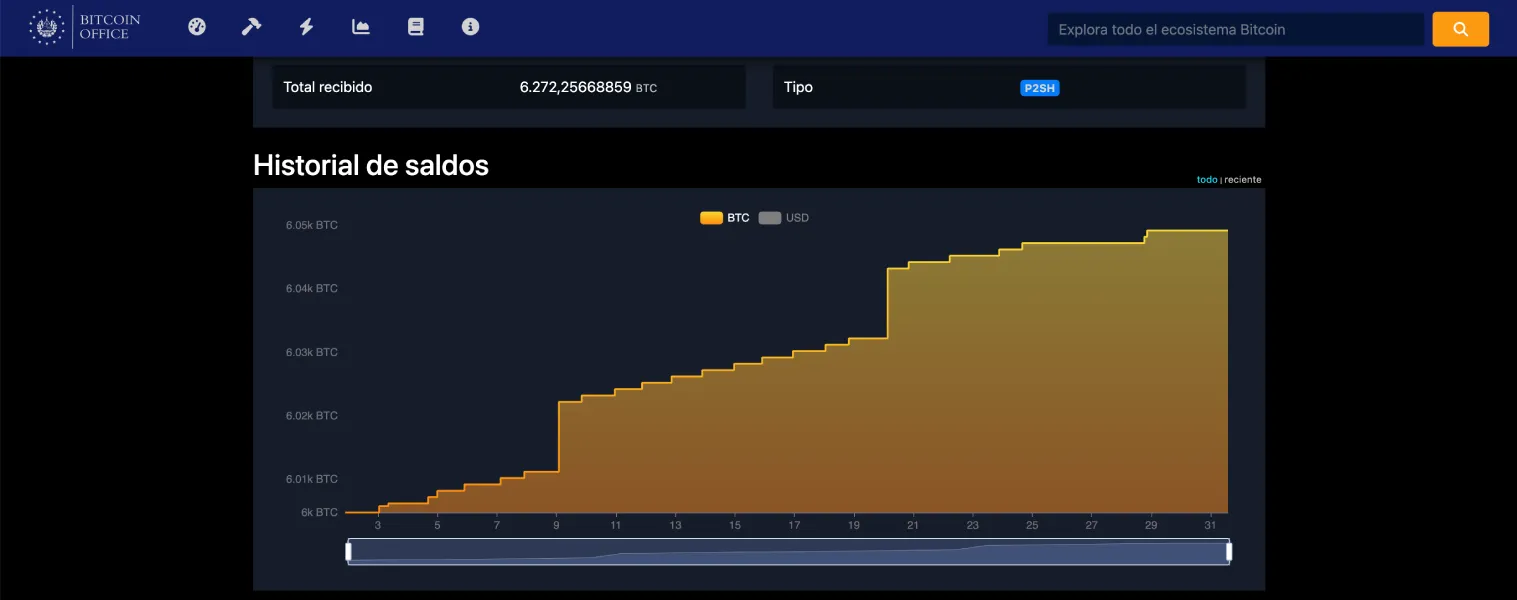
Is now a good time to invest or should you wait out? There is no need to rack your brains over this question if you try this investment strategy.
How does the DCA investment strategy, meaning dollar-cost averaging, work? How does dollar cost averaging compare vs. lump sum? Does DCA work for crypto? Learn more about what dollar-cost averaging is in this guide by the ChangeHero team.
Key Takeaways
- Dollar-cost averaging (DCA) by definition is an investment strategy that involves regular, fixed-amount investments regardless of market conditions. This systematic approach helps manage risk and removes emotional decision-making from investing.
- While DCA generally underperforms in comparison to lump-sum investing in strong bull markets, it proves particularly valuable in volatile markets like cryptocurrencies. The strategy’s effectiveness depends largely on personal circumstances, with factors like regular income and risk tolerance playing crucial roles.
- The key to successful DCA is consistency in both timing and amount, whether investing monthly, weekly, or quarterly. While DCA can’t guarantee profits or protect against prolonged market declines, it provides a practical and psychologically manageable approach to long-term investing.
What is Dollar-Cost Averaging?

/>
What is meant by dollar-cost averaging in stocks or crypto investing? What does DCA mean in crypto or stocks? Investors define dollar-cost averaging (DCA) as an investment strategy where you invest a fixed amount of money at regular intervals, regardless of market conditions. Instead of trying to time the market with a large lump sum, you spread your investments over time—for example, investing $500 every month in a particular stock or index fund.
This approach offers several key advantages. First, it removes the emotional aspect of investing by creating a disciplined, automated schedule. Thus, you’re less likely to make impulsive decisions based on market volatility or news headlines. Second, it helps manage risk by averaging your purchase prices over time. When markets are down, your fixed investment amount buys more shares; when markets are up, it buys fewer shares.
Do you have a stable regular income but not the opportunity to invest a large sum at once? Do you want to minimize the impact of market volatility on your portfolio? Do you apply a hands-off, systematic approach to investing? Are you saving for long-term goals like retirement? If at least one of these points applies to you, DCA is definitely a strategy you should consider.
Keep in mind that DCA does not guarantee profits or protect against losses in declining markets. What it is good for is reducing the risk of making poorly timed investment decisions and providing peace of mind during market turbulence.
An Example of a DCA Investment Strategy
It might be better to explain what dollar-cost averaging is in simple terms with an example. What is a DCA example in stocks? For example, let’s say you invest 100 dollars monthly in a stock. In the first month, the stock costs $50, so you get 2 shares. The second month, the price drops to $25, so you get 4 shares. The third time around, the price rises to $40, so you get 2.5 shares. The average purchase price would be $35.29 per share, which is better than if you had invested all $300 at once when the price was $50.

An interesting real-life example of dollar-cost averaging investment is El Salvador’s Bitcoin reserve strategy. The graph above shows the change in their BTC holdings for the past month. In addition to purchasing 1 BTC daily, they occasionally purchase more, combining the investment strategies. Their current 6,049.18315128 BTC is estimated to be worth 631,171,770 US$ today.
What are the Pros and Cons of DCAing?

/>
Benefits of Dollar-cost Averaging
What is the advantage of using dollar-cost averaging as an investment strategy? As we mentioned before, DCA has clear psychological advantages as an investment strategy. It reduces emotional decision-making by removing the pressure to “time the market.” Whether you automate it or not, DCA creates a sustainable investing habit through regular contributions. Moreover, it reduces anxiety about market volatility since you’re buying at various price points and helps avoid panic selling during market downturns.
Emotional and psychological are not the only risks DCA helps to manage. It spreads investment risk over time across different market conditions and prevents the worst-case scenario of investing all money at the market peak. Dollar-cost averaging is particularly valuable in volatile markets or assets like cryptocurrencies and provides a systematic approach that doesn’t rely on market conditions or predictions.
Even at the practical level, DCA is quite handy. What is one benefit of investing over time? It works well for regular income streams like salaries and can be automated through most investment platforms. Dollar-cost averaging suits investors at any experience level and enables starting with smaller amounts rather than large capital upfront.
Risks and Limitations of DCA
There are no investment strategies without downsides, and DCA is not an exception. What is a flip side to the dollar-cost averaging strategy?
A major limitation is the opportunity cost: in certain conditions, you may miss on profits. In particular, DCA normally underperforms during strong bull markets and over very long periods (+10 years).
Transaction costs are also something to consider before sticking to dollar-cost averaging. Regular purchases will incur trading fees every time, so your trading platform choice may be affected by it.
Consistent purchases can eat into returns, especially with smaller investment amounts.
All in all, DCA does not perform equally well in any market conditions. It is less effective in consistently rising markets and doesn’t protect against long-term market declines. If you misjudge the market, you might end up paying higher average prices or not seeing any positive results due to no long-term growth.
Dollar-cost Averaging vs. Lump Sum

/>
The usual opposite that the DCA strategy gets compared to is lump-sum investing. It is an even simpler investment strategy: as opposed to regular, fixed purchases, you make a single bulk investment and track it. How does the amount of risk you take on differ between dollar-cost averaging and lump-sum investing?
The performance of these strategies varies depending on the market circumstances. As we have already mentioned a few times, in rising markets DCA is not going to look great, although mistiming a lump-sum investment can lead to buying the top, too. Historically, lump-sum investing outperforms DCA in these conditions 66% of the time because more money is invested sooner, capturing more of the upward momentum.
As for volatile markets with large price swings but trending sideways, DCA might be the winning strategy. It reduces the impact of price swings on the portfolio and helps avoid the psychological burden of potentially investing everything right before a major drop.
If DCA is not the best strategy in a bull market, is the opposite true? It might be a bitter pill to swallow but ultimately, neither strategy truly protects against prolonged bear markets. DCA provides some protection from the decline in yielding more shares at lower prices as the market falls but to be successful, eventually, the investment should rise in value. The main advantage of DCA over lump sum here is psychological: it’s easier to continue investing when you’re not risking everything at once.
There are more considerations than just market conditions when you are deciding between dollar-cost averaging and lump-sum investing. You would certainly like to know that DCA tends to be safer in shorter time horizons but over 10+ years, LSI has historically provided better returns.
Even the fact that you weigh these two options against each other may mean you already have the capital for LSI. Especially if it is windfall such as inheritance, bonus, or property sale, that you have not found a better use for yet. Finding the best way to invest a large sum of money is another question entirely. On the contrary, DCA works better if you accrue capital periodically and do not always have the cash lying around to capture opportunities.
The dollar-cost averaging formula is the total sum invested divided by the number of purchased units (stocks, assets etc.). Compare the total sum with the result and decide if you want to offset the risks. Alternatively, you can play around with a stock dollar cost averaging (DCA) calculator to estimate your risk appetite.
The mathematical expectation typically favors lump-sum investing, but the psychological benefits of DCA often make it the more practical choice for many investors. The best approach often depends more on personal circumstances and risk tolerance than pure mathematical optimization.
Dollar-Cost Averaging in Crypto — Is it safe and worth it?

/>
As an investment strategy, dollar-cost averaging can apply to anything — stocks, instruments, and even cryptocurrencies. As mentioned before, this strategy works well in volatile markets, so how well do DCA and crypto mix?
It turns out that dollar-cost averaging is particularly relevant for cryptocurrency investing, given the market’s unique characteristics. On top of the benefits it provides in highly volatile markets, it works in crypto due to some specific advantages of this industry.
Crypto markets experience extreme price swings, making timing entries extremely difficult but DCA helps average out these dramatic fluctuations. The strategy protects against buying at temporary peaks, which are common in crypto. Volatility works in your favor since even if you buy low, you receive more.
Centralized and decentralized crypto exchanges offer automated DCA features with low or no fees. You are also less limited by the lower threshold on investment increments and 24/7 trading means you can set truly regular, not to mention more frequent, intervals (daily/weekly), unlike traditional markets. The psychological effect of DCA is also relevant since the price movements in crypto can be dramatic.
Not only benefits of DCA are amplified when it comes to crypto markets. Amplified risks also pose unique challenges for investors who rely on dollar-cost averaging.
For one, crypto cycles tend to be more extreme than in traditional markets. Bear markets (“crypto winters”) also last longer and see deeper drops. Although there is some data to use for analysis, the relatively young market means less historical data to analyze. Last but not least, crypto projects fail even more often, meaning permanent capital loss.
Which best practices can you use for crypto DCA? Consider focusing on established cryptocurrencies like BTC or ETH, rather than newer, unproven tokens. Set up automated purchases to remove emotional decision-making and keep position sizes appropriate to your risk tolerance. Remember about detailed records for tax purposes and brace for longer periods of negative returns.
Conclusion
As a strategy, dollar-cost averaging is used for investing in any market, not just crypto. However, it seems to be working particularly well with the specific features of this emerging market.
Learn more about investing in crypto from the ChangeHero blog! Follow ChangeHero on X, Facebook, and Telegram for daily updates, cryptocurrency investment tips, and more content.
Frequently Asked Questions
What does DCA stand for?
In finance and trading, DCA stands for dollar-cost averaging, a term meaning an investing strategy of buying fixed amounts of a stock or stocks, ETF, mutual funds, index fund, crypto etc. in set increments (weekly, monthly, etc.).
What is the meaning of dollar cost average (DCA) in stock investing?
What does value- or dollar-cost averaging mean? To dollar-cost average by definition means investing usually small amounts of money in specific time intervals, regardless of market conditions.
Is dollar-cost averaging a good idea?
DCA is an effective strategy for investors who earn regular income and prefer a systematic approach to investing. It helps manage risk and removes emotional decision-making from the investment process.
What is DCA’s disadvantage?
The main disadvantage is that DCA can underperform lump-sum investing during strong bull markets, as some money remains uninvested for longer. Transaction costs can also add up if your platform charges per trade.
What’s an example of dollar-cost averaging (DCA)?
Investing $500 every month into an S&P 500 index fund, regardless of market conditions. Over time, you’ll buy more shares when prices are low and fewer when prices are high.
Is DCA good or bad?
DCA is neither inherently good nor bad. It is a tool that works well for many investors, particularly those who want to reduce risk and maintain a disciplined approach. The strategy’s effectiveness depends on your personal circumstances, goals, and risk tolerance.
Why use dollar-cost averaging?
DCA helps reduce the impact of market volatility on your investments and removes the pressure of trying to time the market. It’s particularly useful for investors who receive regular income and want a systematic investment approach.
How often to invest with dollar-cost averaging?
Most investors choose monthly intervals to align with their salary payments, but the frequency can be weekly, bi-weekly, or quarterly depending on your preferences and circumstances. The key is maintaining consistency with whatever interval you choose.
Disclaimer
This article does not intend to substitute professional financial or investment advice and is intended to serve as educational material on crypto and digital assets. When dealing with cryptocurrencies, remember that they are extremely volatile and thus, a high-risk investment. Always make sure to stay informed and be aware of those risks. Consider investing in cryptocurrencies only after careful consideration and analysis of your own research and at your own risk.






